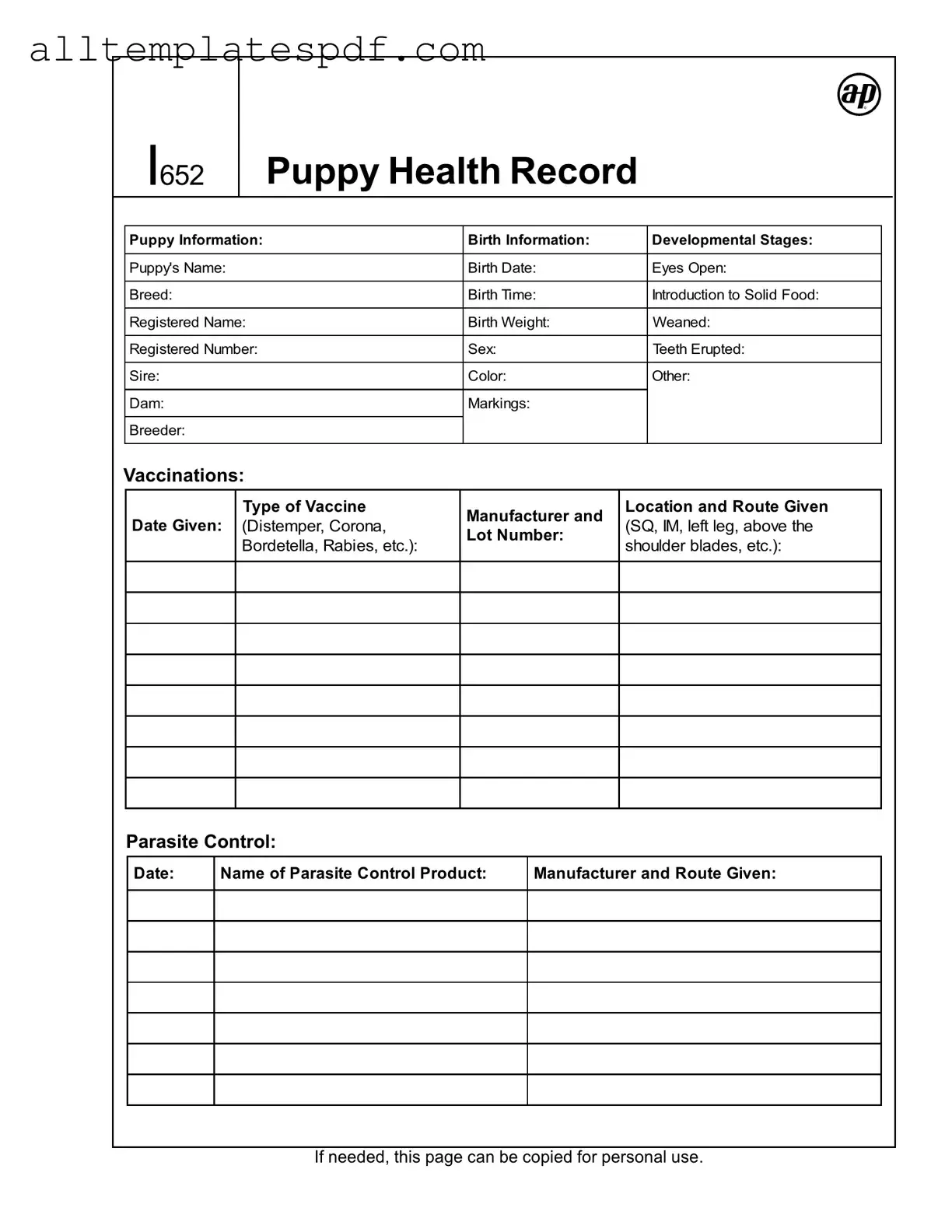Filling out the Puppy Health Record form accurately is essential for tracking a puppy's health and development. However, several common mistakes can occur during this process. One frequent error is leaving the Puppy's Name section blank. Every puppy deserves to have its name recorded for easy identification.
Another common mistake is failing to provide the correct Birth Date. This information is crucial for tracking the puppy's growth and vaccination schedule. Inaccurate birth dates can lead to confusion regarding the puppy's age and developmental milestones.
People often overlook the Registered Number of the puppy. This number is important for breed registration and tracking purposes. Not including it can hinder future registrations or health records.
Many individuals also forget to list the Vaccinations given. Each vaccination should be documented with the Date Given and Type of Vaccine. Missing this information can lead to gaps in the puppy's vaccination history, potentially affecting its health.
Another mistake involves incorrect entries in the Parasite Control section. It is essential to record the Name of Parasite Control Product and its Manufacturer. Omitting this information can result in ineffective treatment or miscommunication with veterinarians.
Some people fail to include the Findings and Comments from examinations or procedures. This section provides valuable insights into the puppy's health and any concerns that may need to be addressed in the future.
Inaccurate recording of the Sex of the puppy is another common error. This detail is vital for health and breeding records, and mistakes can lead to confusion later on.
Many individuals neglect to update the Schedule of Events from Birth to Spay or Neuter. Keeping this schedule current helps track important milestones and ensure timely veterinary care.
People sometimes use abbreviations or shorthand that may not be clear to others reviewing the form. Clarity is key; using full terms ensures that the information is easily understood.
Finally, some individuals forget to sign or initial the form. This signature confirms that the information provided is accurate and complete. Without it, the form may not be considered valid.
